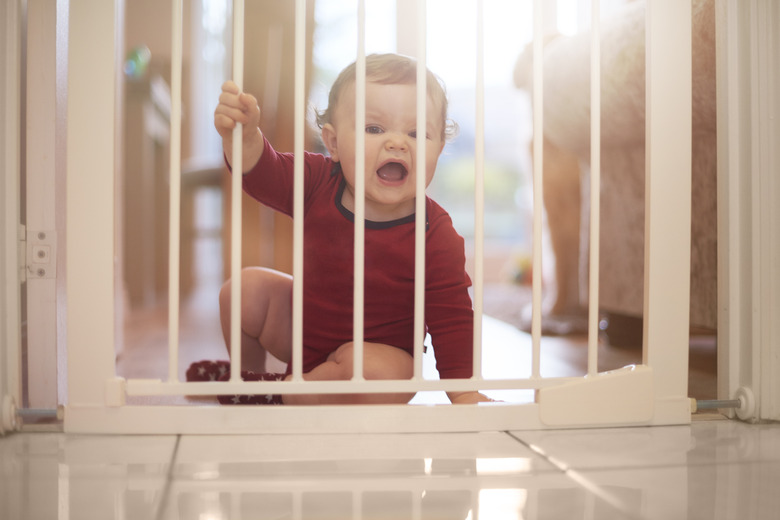How To Install A Baby Gate With Baseboards
We may receive a commission on purchases made from links.
A baby gate can be a lifesaver when your little one becomes mobile. As one of the most important babyproofing products, baby gates keep your baby or toddler out of areas that should be avoided, such as the kitchen, and stop kids from going up or down stairs without your help. Baseboards present an installation issue since they stick out farther than the wall. Learn how to install a baby gate safely with baseboards in the room.
Challenges of Gates and Baseboards
Challenges of Gates and Baseboards
Secure installation of a baby gate relies on a strong attachment at the top and bottom. When your doorway has baseboards, the width is slightly less at the bottom where the baseboard sticks out. For a pressure-mounted gate, the top mounts might not be tight enough if you set the gate to accommodate the width with the baseboard.
You can't simply raise the gate above the trim in most cases or it will be too high. The safest positioning for a baby gate is no more than 1 to 2 inches off the floor. Most baseboards are at least 3 inches high.
You can get gates with adjustable mounts so the top and bottom can be at slightly different widths to accommodate the baseboards. You can also buy baby gate adapters that attach to the wall above the baseboard but provide a lower mounting surface for the gate. These adapters are often compatible with pressure-mounted and hardware-mounted gates.
Types of Baby Gates
Types of Baby Gates
Baby gates to babyproof your home can be pressure-mounted or hardware-mounted gates. Pressure-mounted models are easy to move to different locations and don't require screw holes in your walls or trim. However, they are easier to push down if a baby or toddler climbs on or leans against them.
When installing baby gates near stairs, always use hardware-mounted gates. If a pressure-mounted gate gives way, your baby could fall down the entire flight of stairs. Pressure-mounted gates are best in doorways that connect two rooms rather than near stairs.
Choosing Baby Gates
Choosing Baby Gates
Not all baby gates are safely manufactured or reliable. Any baby gate can fail if you don't install it correctly, but some start off safer than others. Only buy gates with the ASTM/JPMA certification, which means the products meet the rigorous, voluntary standards of these trusted organizations.
Buying a new baby gate is best, especially if yours is several years old, since the standards can change at any time. For example, starting in July 2021, there was a new requirement that all child safety gates be able to hold up to 30 pounds of force without dislodging. The previous requirement was only 10 pounds of pressure. Choosing a new, certified gate means you get a device that meets the latest requirements.
Choose a certified baby gate with adjustable mounts that let you account for the width difference between the bottom where the baseboard is and the top where the mounts touch the wall. This allows you to get a secure installation at both points, making the gate less likely to move.
Installing Pressure-Mounted Gates
Installing Pressure-Mounted Gates
To install a pressure-mounted gate, position the gate within the doorway to determine the width. Adjust the rubber-coated mounts along the bottom, usually by screwing them in or out, to get a secure placement at the baseboard with the gate 1 to 2 inches off the floor. Adjust the mounts at the top of the gate in the same way until they're secure against the wall. Test the installation by pushing against the gate on both sides.
Installing Hardware-Mounted Gates
Installing Hardware-Mounted Gates
If you're using a safety gate adapter, screw it to the wall where you want the gate according to the instructions. You'll likely need to find the studs in the wall so you can screw the adapter to the wall securely. Next, screw the mounts for the safety gate to the adapter, referring to the instructions for the specific gate to determine how to do it. You'll likely need to screw four mounts to the walls or adapter to hold the gate in place.
